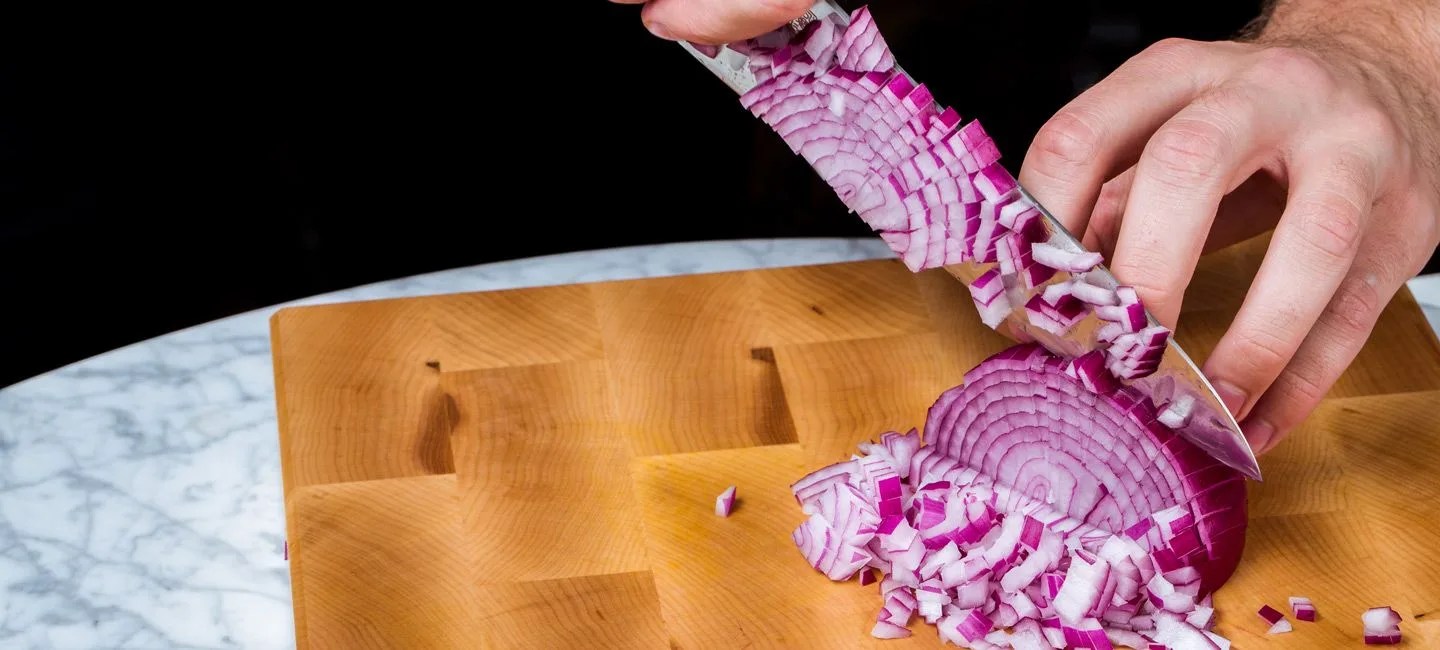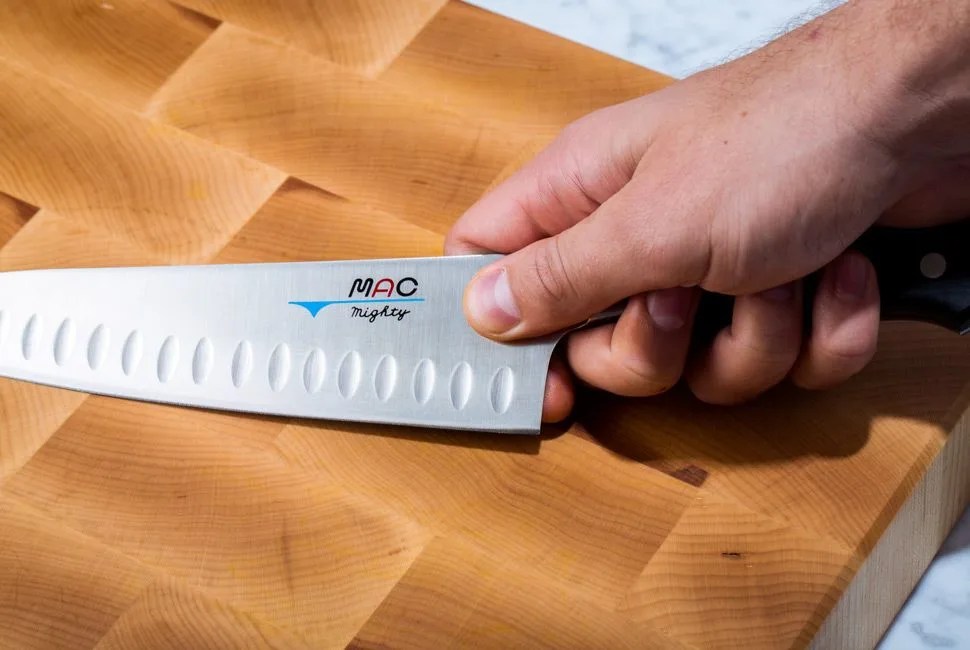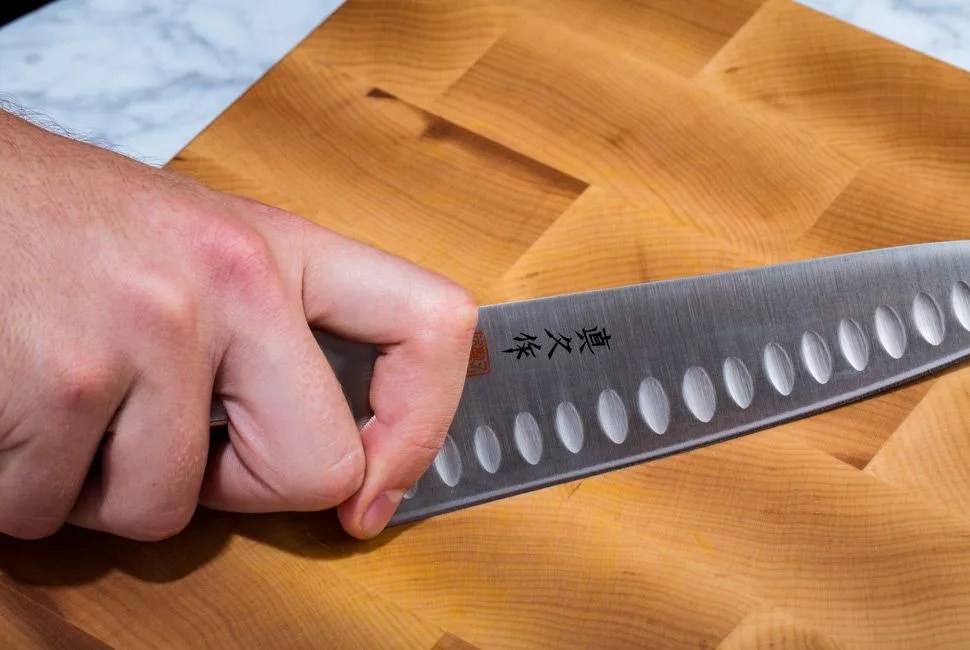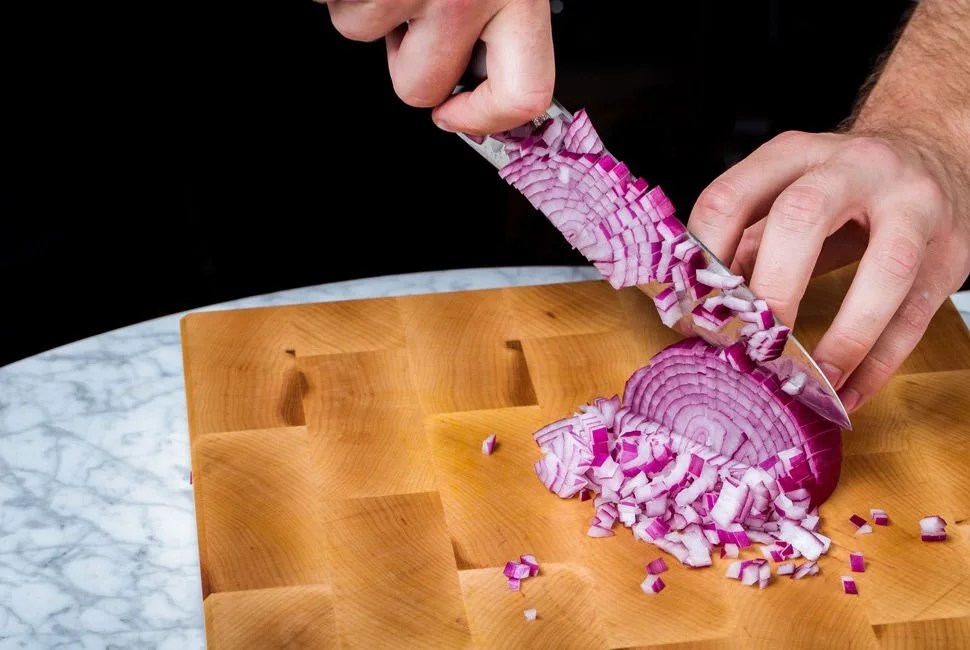Some skills are so rudimentary that it’s easy to forget we ever learned them — how to shave, tie your laces, throw a spiral. Too often missing from this list, however, is one of life’s most important skills: properly wielding a chef’s knife, the most important tool in the kitchen. With proper form, and a bit of practice, prepping dinner becomes both safer and more efficient. If you’re starting from scratch, with little experience behind you, here’s what you never learned about using a chef’s knife, but should have.
The Chef’s Grip
2 photos
Hold the knife correctly. Most chefs hold a chef’s knife by choking up on the handle, using their thumb and index finger to pinch opposites sides of the blade. This may feel weird if you’re not used to it, but gripping around the bolster allows for maximum control over the blade, resulting in both efficiency and safety. Ultimately, however, the best way to handle a knife is whichever way feels most secure in your hand.
The ‘Claw’
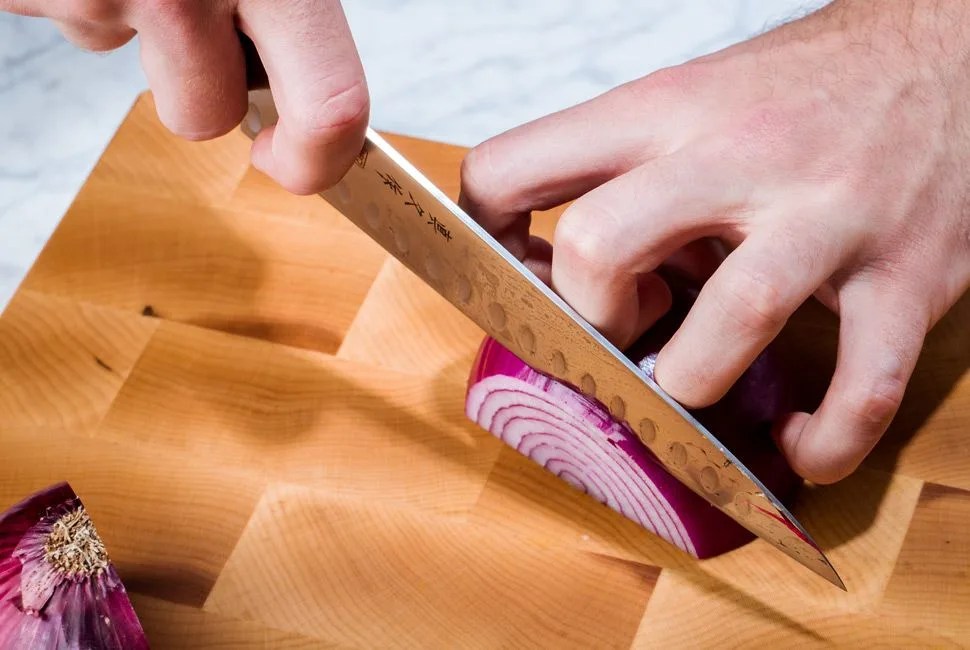 Photo by Henry Phillips for Gear Patrol
Photo by Henry Phillips for Gear PatrolProtect the guiding hand. Your other hand, a.k.a. the guiding hand, does two things. It stabilizes whatever you are cutting so that it doesn’t skid around on the board, but it also helps position the blade. The safest method is to curl your finger into a claw position so that, when you are gripping something, they’re tucked out of harm’s way (keep your thumb in mind, too). Position your hand in a way that your middle finger is more forward than the others, then use your top knuckle to guide your knife on the downward stroke. The face of the blade should never lose contact with your skin.
